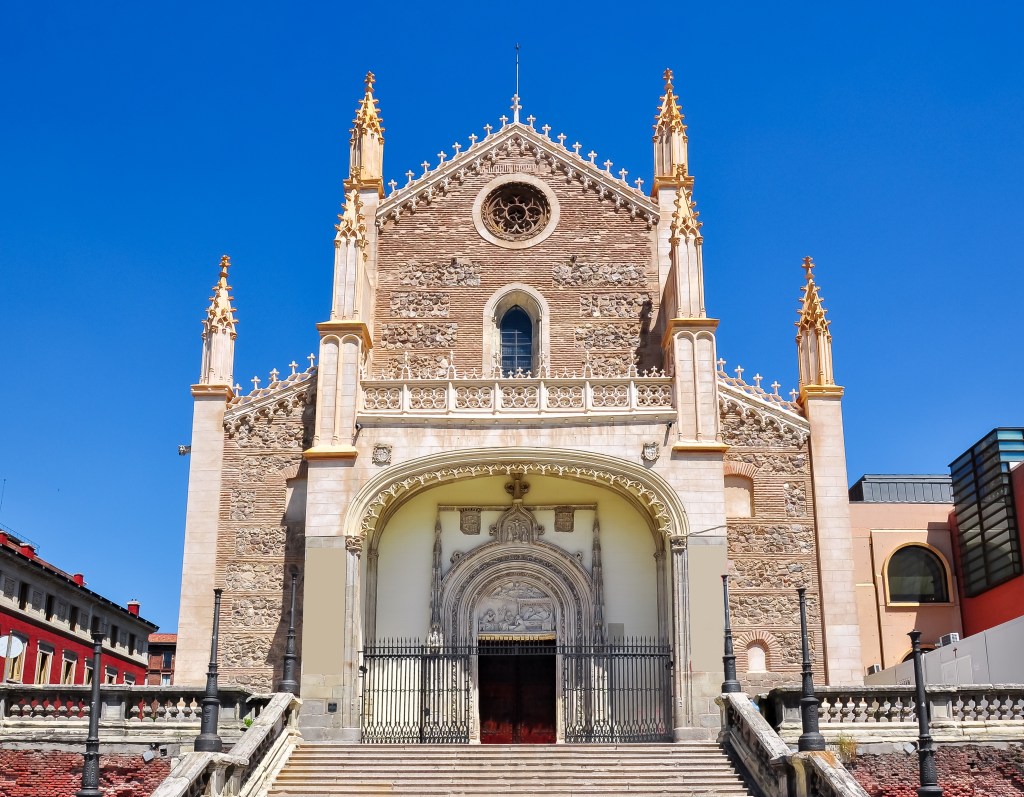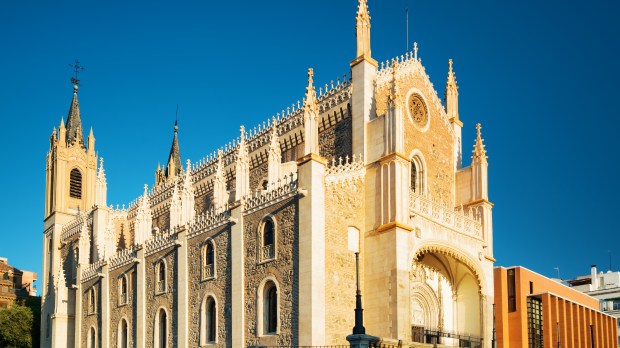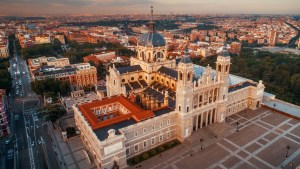In the southeastern neighborhood of Retiro, in Madrid, stands the Church of St. Jerome the Royal. As is often the case with European churches, it has seen a good number of successive restorations – thus, the final result: a rather seamless mixture of Gothic and Renaissance elements.
The church that pilgrims and tourists alike visit today is but the remaining structure of a former Hieronymite monastery that once stood beside the royal palace of Buen Retiro which, in turn, is now part of the noted Prado museum – one of Spain’s most important museums. In sum, the church is testament to the city’s rich historical and architectural tapestry.
The church was built in the late 15th century, with meticulous attention to architectural detail, for a Hieronymite community. The Hieronymite Order, also known as the Order of St. Jerome, is a Catholic monastic order founded in the 14th century. It traces its origins to (or, at the very least, it finds its charismatic inspiration in) the influential figure of St. Jerome, the early Christian theologian and scholar mostly known for his translation of the Bible into Latin – the Vulgate.
The exterior of the church is, as could be expected from a royalchurch, a sober masterpiece. Visitors entering El Prado museum just have to look left to admire the elegant Gothic spires rising from the buttresses. The façade, adorned with finely sculpted reliefs, already moves toward a more Renaissance-leaning style. Instead of being fully covered with intricate carvings depicting biblical scenes (as one would expect from a Gothic façade), there is plenty of “empty” room in it. Furthermore, the exposed brick resembles the typical bossage technique found in plenty of Renaissance Florentine palazzi.

This combination of Classic sobriety and Gothic symbolism is just one of the many reasons why the Church of St. Jerome the Royal is a living testament to the evolution of architectural styles – and aesthetic and theological developments. The transition from late-Gothic to Renaissance elements is impeccably integrated, creating a harmonious fusion that challenges the long-time held idea of the Renaissance as being a reaction against whatever is deemed medieval. Whereas it is true that the Renaissance was marked by a desire to distance itself from the preceding era, and discrediting the Middle Ages served the purpose of emphasizing the alleged cultural and intellectual superiority of the late 15 and 16th centuries, it is also true that this was not the case everywhere in Europe – and certainly not in Spain.
Also, the significance of this church in Spanish history cannot be overlooked. Originally commissioned by the Catholic Monarchs Ferdinand II of Aragon and Isabella I of Castile, the monastery served also as a retreat for later monarchs, and was expanded into a palace named El Buen Retiro. The church was frequently used for royal funerals, swearing-in of heirs, weddings, and royal proclamations.
During the 15th and 16th centuries, the Hieronymite Order experienced a period of expansion and reform, receiving patronage from the kings of Spain and Portugal, who supported its monasteries so that the order could contribute to the intellectual and cultural life of the time through its commitment to scholarship. This explains why the Hieronymites would be in charge of such an important monastery – a royal one, no less. Soon enough, the order’s libraries became renowned repositories of knowledge, and many Hieronymite monks were scholars, theologians, and writers in their own right. So, the next time you find yourself in Madrid, take a moment to appreciate the spiritual, historical, and cultural aura of the Church of St. Jerome the Royal.



